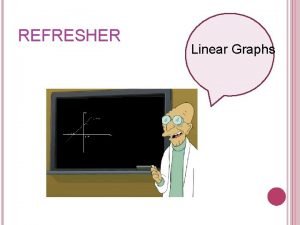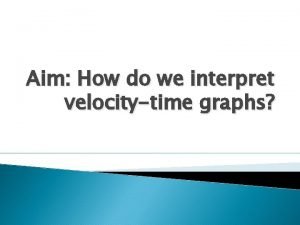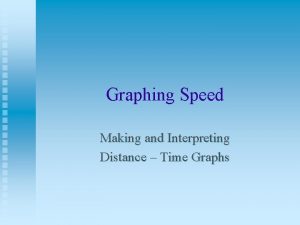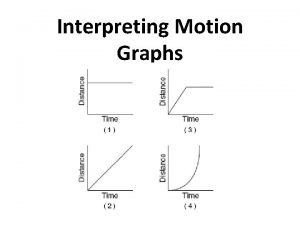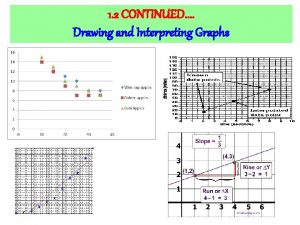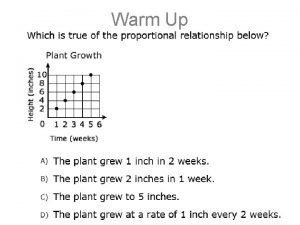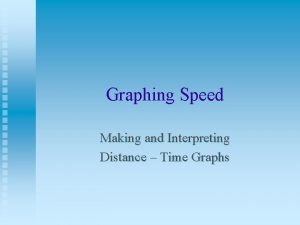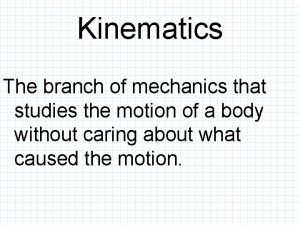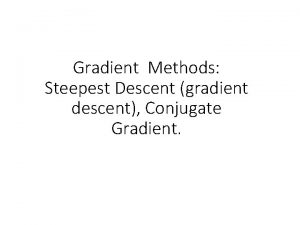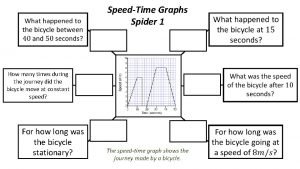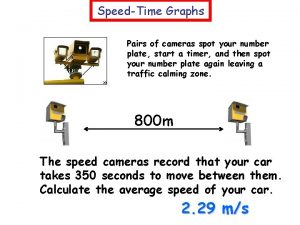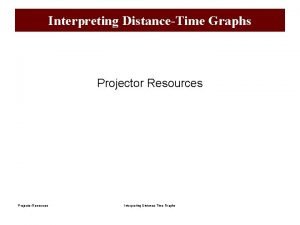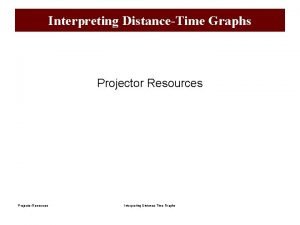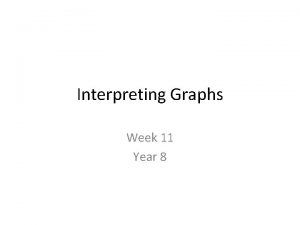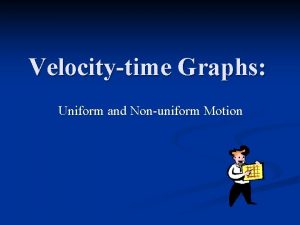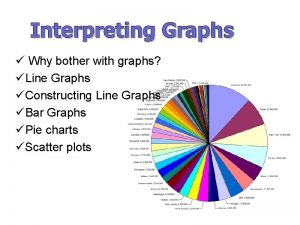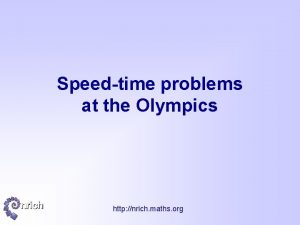SpeedTime Graphs Interpreting Velocitytime graphs the gradient of












- Slides: 12

Speed-Time Graphs

Interpreting Velocity/time graphs • the gradient of a velocity/t graph is the acceleration v t Constant velocity (the velocity remains the same)

Interpreting Velocity/time graphs Faster constant acceleration v Slow constant acceleration t Constant acceleration (the velocity changes at a constant rate)

Interpreting Velocity/time graphs decreasing acceleration v Increasing acceleration t Changing acceleration (the rate of change in velocity per second changes)

Interpreting Velocity/time graphs RC Car Journey B v C D A t • • A -fast acceleration (steep gradient and line straight) B –slower acceleration (shallow gradient and line straight) C –constant velocity (line horizontal) D –Very fast deceleration (steep gradient, straight line, sloping down)

Acceleration • An object changing its speed is said to be accelerating. If the acceleration is: – positive (eg. 2 ms-2) = object speeding up – negative (eg. -2 ms-2) = object slowing down or decelerating

Acceleration (change in speed) • acceleration is a measure of how quickly the velocity (speed) of an object is changing • If the object is a constant acceleration (unbalanced forces) the formula is; Note; v =final velocity-initial velocity v=vf - vi • The units for acceleration are ms-2

Example • A racing car speeds up from 8 ms-1 to 24 ms-1 and takes 8 s to do so. Calculate the acceleration. = 24 – 8 = 16 ms-1 A = 16 ms-1 8 s = 2 ms-2

Examples 1. A cyclist starts from rest and accelerates to 15 ms-1 in 8 s. Calculate her acceleration 1. 9 ms-2 2. A runner jogging at 2. 5 ms-1 increases his pace to 4. 5 ms-1 in 3 s. What was her acceleration? 0. 7 ms-2

Calculating the Gradient (v/t graphs) • the gradient of a velocity/time graph is the acceleration Velocity Gradients 30 Velocity (m/s) 25 20 15 10 5 0 0 2 4 6 8 10 12 14 Time (s) For the blue line; For the green line; For the red line; Gradient=Rise/Run =6/12 =(14 -2)/12 =24/12 =0. 5 ms-2 =1. 0 ms-2 =2. 0 ms-2

Velocity/time graphs • The area under the graph is the distance travelled (as the cut up ticker timer tape showed) Car Journey 10 9 Velocity (m/s) 8 7 6 5 4 3 2 1 0 0 2 4 6 8 10 12 Time (s) Area of triangle=½base ×height Area of rectangle=base × height = ½× 6× 9 = 4× 9 =27 m =36 m Total area=27+36=63 m

Worksheet
 Interpreting line graphs year 5
Interpreting line graphs year 5 Interpreting linear graphs
Interpreting linear graphs Interpreting velocity time graphs
Interpreting velocity time graphs Interpreting distance time graphs
Interpreting distance time graphs Interpreting distance time graphs
Interpreting distance time graphs Interpret motion graphs
Interpret motion graphs Drawing and interpreting graphs
Drawing and interpreting graphs Lesson 10 interpreting graphs of proportional relationships
Lesson 10 interpreting graphs of proportional relationships Creating and interpreting distance time graph
Creating and interpreting distance time graph Interpreting graphs
Interpreting graphs Enzyme activity graph
Enzyme activity graph Interpreting circle graphs
Interpreting circle graphs Reading circle graphs
Reading circle graphs

